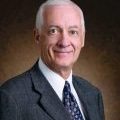FROM NATURE MEDICINE
The failure of type 2 alveolar epithelial cells (AEC2s), which are critical to the repair and regeneration of lung tissue, appears to be a major cause of pulmonary fibrosis, according to a report published online in Nature Medicine.
Researchers performed a series of in vitro and murine studies to better understand the molecular mechanisms underlying pulmonary fibrosis, which is believed to result from repeated microinjuries to the alveolar epithelium that in turn promote excessive, sustained fibroblast activation with matrix-producing myofibroblasts. They found that expression of both hyaluronan (HA) and Toll-like receptor 4 (TLR4) on AEC2s is deficient in a mouse model of pulmonary fibrosis and in samples of lung tissue from patients with the disease, but not in samples from healthy control subjects or from patients with chronic obstructive pulmonary disease (COPD).
“The main finding here is that the endogenous matrix glycosaminoglycan HA and the innate immune receptor TLR4 are required for optimal AEC2 renewal and for limiting fibrosis after lung injury,” said Carol Liang, MD , of the department of medicine and the Women’s Guild Lung Institute, Cedars-Sinai Medical Center, Los Angeles, and her associates.
“These findings are the first published evidence that pulmonary fibrosis is primarily a disease of AEC2 stem cell failure,” Dr. Liang said, in a written statement .
The investigators began by showing that AEC2s engineered to stop expressing hyaluronan or TLR4 (by deleting the genes that encode for that expression) showed impaired self-renewal in vitro, compared with normal AEC2s. In a mouse model, the engineered AEC2s also caused impairment in the healing of deliberately induced lung injury.
In addition, the researchers developed a mouse model of pulmonary fibrosis and showed that treatment with exogenous interleukin 6 “enhanced AEC2 renewal and partially reversed the fibrotic phenotype” in vivo.
“To determine whether our observations in the mouse model of [deficient] AEC2s have relevance to human disease, we isolated AEC2s from lung explants of human subjects who had undergone lung transplantation because of [idiopathic pulmonary fibrosis],” the researchers said. These samples showed marked depletion in the number of AEC2s, compared with samples taken from healthy control subjects and from patients with COPD.
In addition, the few remaining AEC2s in the samples affected by pulmonary fibrosis were deficient in the expression of HA, compared with those in the samples from control subjects. This suggests that loss of cell-surface HA is unique to severe pulmonary fibrosis, the researchers said (Nature Med. 2016. doi: 10.1038/nm.4192 ).
Since pulmonary fibrosis is characterized by patchy areas of parenchymal fibrosis alternating with relatively normal lung tissue, the investigators then compared AEC2s taken from these two distinct types of tissue in the patient group. They found that AEC2 cells from affected areas of the lung showed much more markedly reduced expression of HA than those from healthy areas of the lung. Flow cytometry testing further demonstrated that the number of AEC2s also was greatly reduced in affected lung tissue but relatively higher in more normal lung tissue. However, even the “healthy” lung tissue from affected patients had lower numbers of AEC2s and impaired cell renewal when compared with tissue from unaffected control subjects, the researchers noted.
“In future studies, we will explore how the loss of hyaluronan promotes fibrosis and how it might be restored to cell surfaces. These endeavors could lead to new therapeutic approaches” for this progressive, fatal disease for which there is no effective treatment at present, Dr. Liang said, in the written statement.
The researchers reported having no relevant financial disclosures.




